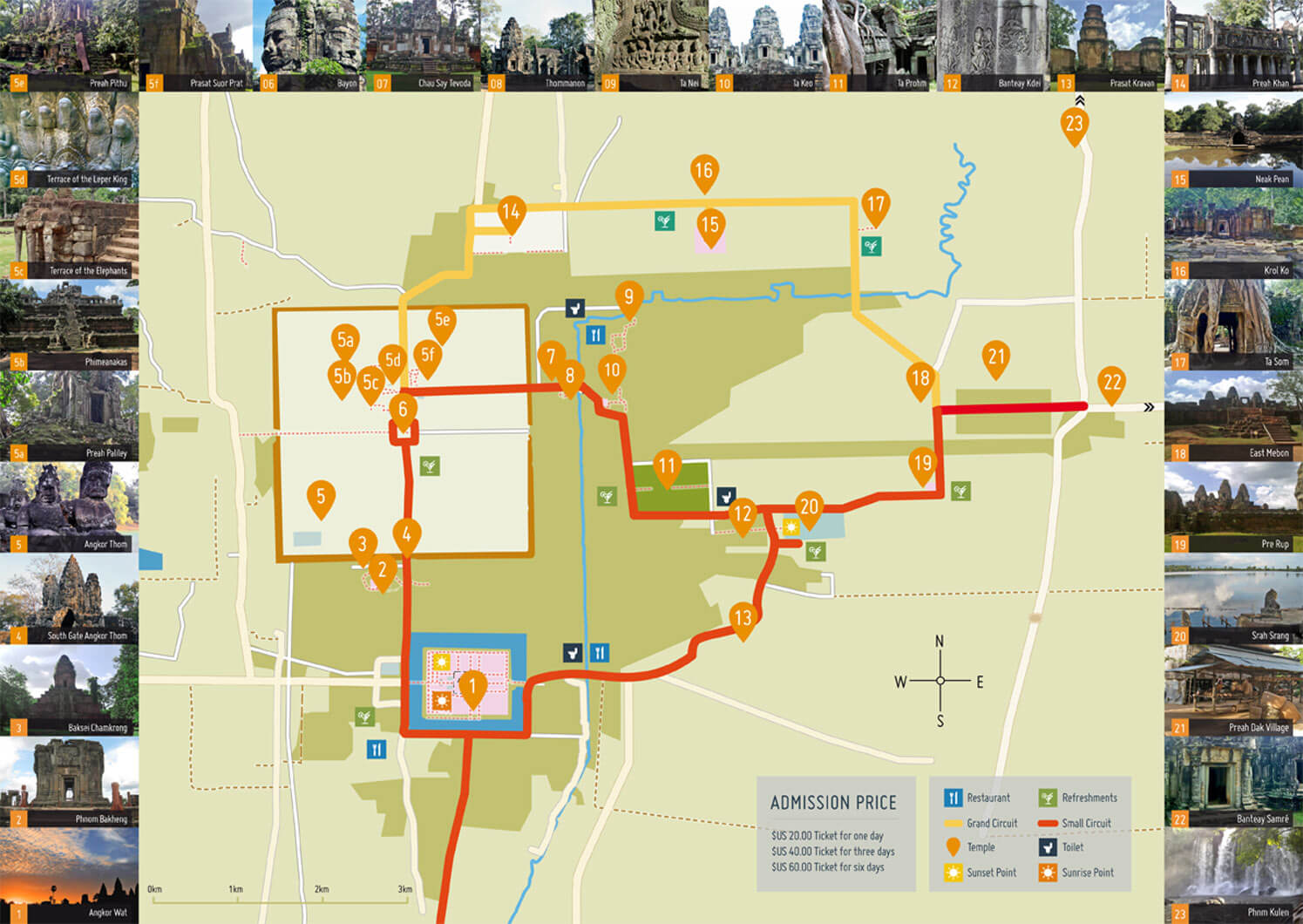Exploring Angkor Wat is a breathtaking journey through time and culture, where ancient wonders have stood resilient against the test of centuries. For the traveler eager to absorb both the grandeur and the minute details of this UNESCO World Heritage site, a comprehensive map of the temples is essential. Let’s delve into the various layers of your visit, emphasizing how a well-planned itinerary can transform your experience from dawn till dusk.
Prepping for the Adventure
Before you set foot on the sacred grounds, understanding the layout of Angkor Wat and its surrounding temples will greatly enhance your exploration. The temple complex covers an impressive area of over 162.6 hectares, making it crucial to have a clear sense of direction. A well-crafted temple map serves as your best ally, helping you navigate through the sprawling site with relative ease and confidence.
Often, visitors contemplate the best time to visit, and while the sun-drenched days evoke a sense of adventure, nothing compares to the ephemeral beauty of sunrise at Angkor Wat. To catch the first light, plan to arrive before dawn, allowing yourself to relish in the anticipated spectacle as the first rays illuminate the ancient stones. Referencing your temple map, plot a course that incorporates both the iconic highlights and hidden gems.
The Main Attractions
The star of the show is undoubtedly Angkor Wat itself, famed worldwide for its stunning architecture and intricate bas-reliefs narrating epic tales from Hindu mythology. This temple is not just a monument; it’s a canvas of history with each carving telling a story that beckons you to linger. Allocate at least a couple of hours here, and remember to wander through the corridors where the intricacies of the craftsmanship will captivate your senses.
Yet, Angkor Wat is but one jewel in the crown of the Angkor Archaeological Park. As per your map, proceed to the adjacent Bayon Temple, renowned for its enigmatic smiling faces. The structure’s unique design beckons you to explore its twisting pathways where every turn surprises with a new vista. Spend time absorbing the atmosphere — the soft light filtering through the trees coupled with the distant sounds of nature provides a magical backdrop.
Other notable temples include Ta Prohm, best known for its haunting yet beautiful integration with nature. The intertwining roots of giant trees enveloping the ruins creates a surreal visage that has drawn many a photographer’s lens. A good tip is to visit early in the morning, taking advantage of the quietude before the crowds arrive.
Hidden Gems Off the Beaten Path
While the prominent temples tend to capture most of the attention, the Angkor complex is dotted with lesser-known sites that offer serene spaces to reflect and absorb. Consider venturing to Banteay Kdei, a temple marked by a strikingly atmospheric ambience and fewer visitors. This allows for a more intimate exploration where you can almost hear the whispers of the past echoing in the air.
Use your map to guide you towards Preah Khan, a sprawling monastic complex with a paradoxical charm: it feels both grand and ghostly. Here, tranquility reigns, allowing for quiet contemplation—an essential antidote to the stimulating explorations of the day.
Navigating the Complex
With so much to see, it’s easy to get disoriented amidst the labyrinthine layout of temples. This is where the value of a physical or digital map is paramount. Many maps detail not only the temple locations but also recommended walking paths and seating areas for rest. The pathways are generally well-maintained, making navigation a breeze, but with your map in hand, you can zigzag seamlessly from one site to another.
Moreover, take note of the distances between temples. Some might seem close on the map, yet the time required to explore each location varies. Consequently, pacing yourself throughout the day ensures that you can relish each temple’s unique allure without feeling rushed.
The Culinary Experience
As your exploration will undoubtedly work up an appetite, consider where you’ll refuel during your temple pilgrimage. The area surrounding Angkor Wat features numerous eateries offering Cambodian delicacies. Emerging from the dust of the temples to the delightful aromas wafting from local kitchens is a sensory treat. Traditional dishes like amok (a coconut milk curry) or lok lak (stir-fried beef) can provide a refreshing intermission, allowing you to recharge for the continued adventure ahead.
From Sunset Reflections to the Stars
As the sun begins to set, create an agenda that allows you to capture the enchanting hues reflecting off the temple surfaces. Many visitors flock to Phnom Bakheng, where panoramic views over Angkor Wat during sunset perfectly encapsulate the day’s experience. It’s a time for reflection, both visually and spiritually. Allowing yourself to feel the energy of the places you’ve experienced can be transformative.
As night descends, the stars begin to twinkle above the ancient structures. Depending on when you visit, consider a night walk through the park. Some evenings, special events or light displays may be held, conjuring a different perspective on the beauty of Angkor Wat and its surroundings.
In conclusion, the richness of the Angkor complex is best experienced with careful planning, utilizing a detailed temple map to navigate one of the world’s most extraordinary archaeological wonders. Each step you take resonates with history, culture, and shared human experience. From sunrise to sunset, your visit can be an enriching odyssey that etches unforgettable memories in the canvas of your heart.
